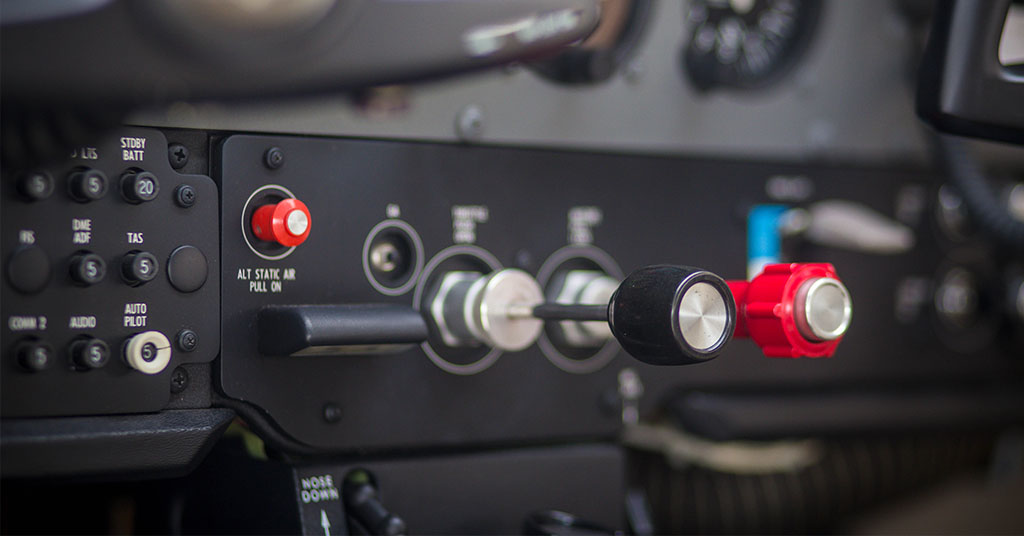By: Rick Farmer
Every fuel injection system made today requires that a calibrated device be used to accurately deliver a precise amount of fuel to each cylinder at the exact instant fuel is needed for combustion. Automobiles accomplish this by use of computers and modern electronics, but did you know that the fuel injection system found on modern general aviation aircraft is 1950’s technology?
While many experimental aircraft these days are seeing more modern automotive technology, most certificated aircraft continue to maintain a simplistic design with minimal moving parts utilizing a mechanical continuous-flow fuel injection system.
In carbureted engines, the fuel/ air mixture meets in the carburetor. The mixture then travels to each cylinder through the air intake. In the fuel injected engine, the fuel and air do not mix until they reach the cylinders. Since fuel injection systems shoot fuel directly into the cylinders, they are easier to flood (too much fuel) when starting.
Though easier to start, carbureted engines are less efficient during flight. Since the fuel/air mixture in these systems meet at the carburetor, the mixture is less precise for each cylinder. Fuel injectors are calibrated to force the same amount of fuel into each cylinder consistently. Due to their precision, many fuel injection systems also permit monitoring of each cylinder’s EGT (Exhaust Gas Temperature). EGT probes on each cylinder allow the pilot to create the ideal engine performance to save fuel, reduce wear on the engine, and eliminate carburetor icing. For these reasons, fuel injected engines are standard on most new aircraft.
While most pilots have started fuel injected engines hundreds of times, few realize that doing so incorrectly can cause permanent damage to their expensive and critical fuel servo. Starting procedures for fuel injected engines vary depending on the aircraft/engine combination, so paying close attention to the manufacturer’s starting procedure is critical.
When a fuel injected aircraft is started cold, it is usually important to prime the engine first to get fuel to the cylinders to aid in starting. However, make sure that you know the differences for your aircraft. For example, Cessna recommends that the priming procedures for the 172 be omitted when starting a warm engine that was operated 30 minutes or less prior to starting. Priming the engine when not needed can cause fuel to drain back into areas of the servo that are designed for “air only,” resulting in fuel servo contamination that can cause rough running engine issues, and inability to hold idle when power is reduced. This is usually noticed during engine run-ups when the power is reduced to idle after being at high RPM such as when performing magneto checks, but can also happen when power is reduced to idle during landing or when performing low power maneuvers in flight.
An aircraft with a rough idle or excessively low idle RPM is an issue that is easy to overlook, but it is important to notify a mechanic immediately if you encounter any problems.
Take the time to learn the different types of engines are in the planes you fly. They can all behave a little differently, and it’s important to understand these differences to keep an aircraft in its best condition and ready to fly.










